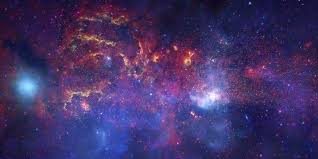
The Most Scientifically Magnificent Astronomy Spot On Earth Is Australian
Share
You live in a suburban area and you look out at the sky, it might seem normal...
But its actually awash with pollution.
More specifically, light pollution that excessively misdirects, obstructs and interferes with our ability to view the night sky.
The sky you see is oftentimes awash with artificial pollution from street lights, cars, buildings, homes and has severe consequences.
It disrupts astronomical research, affects natural ecosystems, has negative health outcomes for humans and wastes energy adding to the worsening effects of climate change.
But...
There is a majestic place that's the clearest and most viewer-friendly on Earth.
Where our sights into the deep unknown stretch just that little bit further...
And we've found it through a team of crack scientists.
The catch?
It's Australian, but it's not readily accessible.
At all...
It's actually about as "not readily accessible" you can get before you can call it completely inaccessible.

It's in Antarctica.
But not just in Antarctica...
It's at a major research centre named Dome A, the highest ice dome on Antarctica's Polar Plateau within Australia's Antarctic Territory.
And while it's technically Australian...
It's also on the most frigid continent on Earth.
And more than 13,000 feet (4 km) above sea level...
But wait, there's more...
To get to the Polar Plateau, you're looking at a trek of about 1,200km inland from the sea in the snow.

Do you think it gets a bit chilly 13,000 feet in the air in Antarctica?
Why yes it does!
Temperatures have dropped as low as -89.2℃ during the blackout period where the sun disappears for 6 consecutive months.
Okay, okay that's the nasty stuff taken care of.
So what about the amazing view of the universe?
This is where the lack of light pollution really "heats up" the Antarctic experience.
" a telescope at Dome A could out-perform a similar telescope located at any other astronomical site on the planet. The combination of high altitude, low temperature, long periods of continuous darkness, and an exceptionally stable atmosphere, makes Dome A a very attractive location for optical and infrared astronomy. A telescope located there would have sharper images and could detect fainter objects." says Paul Hickson, an astronomer from the University of British Columbia (UBC).
What Hickson is touching on is the unique locations ability to pierce the layer of atmosphere closest to Earth called the boundary layer.
It's a gassy covering that is chock full of dust and moisture that's manipulated by ground heat. This is why star appear to sparkle when we look at them directly.
The ability to see through the boundary layer and into the deep unknown is measured in arc seconds. Arc seconds are a way of calculating clarity in light sources shining to Earth, and the lower the score, the better the clarity.
While Dome A is yet to get a thorough reading on its arc seconds, other spots lower in the boundary layer in Antarctica have clocked in at a considerable 0.23-0.36 arc seconds.
And the highest one- off reading so far at Dome A was 0.13 arc seconds, a clarity score so good it rivals those of telescopes in the lower thresholds of what we consider the beginnings of space.
Compare this to some suburban areas that have an arc seconds score of about 19.2 to about 20.2.
Meaning...
Dome A is almost 156 times clearer than the average neighbourhood.
On a good day, maybe even more.
The sad thing is we don't have any shots from Dome A as yet.
Because the findings are so fresh we haven't received them.
But if you follow our social media at the buttons below you won;t miss us posting the groundbreaking pics as they arrive.
Thanks for reading and please share with a space fan to spread ARSE into the deep unknown...
#Space_Aus




